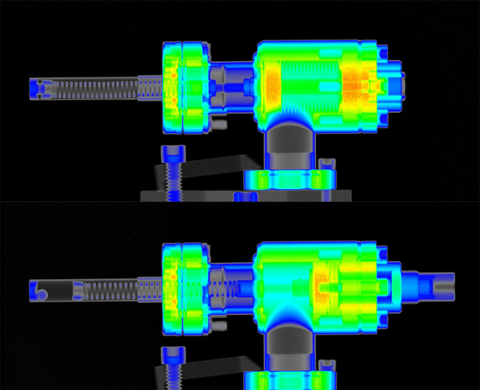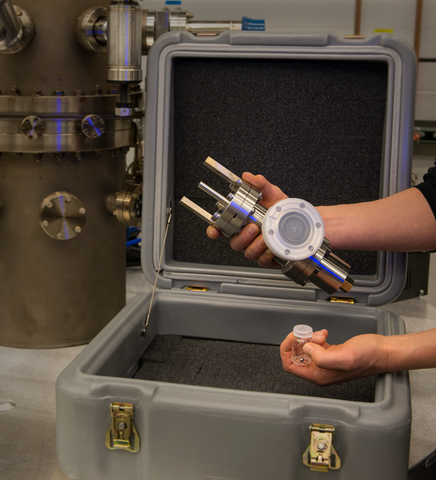
Neutron radiographs of the spring-transport mechanism taken at the NIST Neutron Imaging Facility. Top: Valve closed. The mechanism captures the rotor in the thimble. Bottom: Valve open.
PML researchers have applied for a provisional patent on a device to protect expensive "spinning-rotor" high-vacuum gauges – used as transfer standards and reference standards by calibration labs – that are vulnerable to damage during transport.

Each unit contains a small steel rotor ball in a vacuum housing. When in use, the ball is magnetically levitated and spun. Any surrounding gas slows the ball's rotation rate, providing a sensitive measure of pressure.
The devices are routinely shipped for calibration, often internationally. To maintain stability, it is desirable to ship the rotor under vacuum and fully immobilized. This is difficult to do with conventional designs.
PML's new device is a spring-transport mechanism that houses the ball in a vacuum thimble attached to a high-vacuum valve. When the valve is attached, the rotor is free to be levitated and be used as a gauge. When the valve closes, the rotor is sealed under vacuum and immobilized for shipment by a spring mechanism.
The device is very robust: During testing, it was dropped more than 180 times and experienced forces in excess of 120 g without damage.

